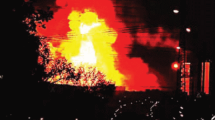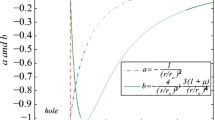Abstract
The hole-drilling method is widely used to measure residual stresses in mechanical components. Recent developments have shown that strains measured on the surface during an incremental drilling can be related to residual-stress distribution. Researchers throughout the world have proposed different calibration methods which lead to more or less accurate results.
The present paper discusses different approaches used. A new calibration method is proposed. We also show how finite-element analysis can be used to determine the correlation coefficients. The variation of the strains measured on the surface for each increment is due to, first, the residual stresses in the layer and, second, the change of the hole geometry. Most authors do not consider the latter aspect. Our results show that this causes a significant error in the experimental data. The finite-element method has been used to compute the coefficients for all types of strain-gage rosettes when the hole diameter is predetermined.
Another problem of the hole-drilling method is the selection of the drilling tool. Two systems have been studied: ultra-high-speed air turbine and conventional milling machine. The method has been applied on both shot-peened and water-quenched test specimens. The results are successfully compared with the bending-deflection and the X-ray method.
Similar content being viewed by others
Abbreviations
- A, B :
-
calibration coefficients using the standard elasticity laws
- Ain, Bin :
-
calibration coefficients for the geometryn and the loadingi
- d :
-
hole diameter
- E :
-
elastic constant
- \(\vec h\) :
-
mean radial direction of the central grid
- Δh :
-
increase in the depth of the hole
- r :
-
radius, distance from the center of the rosette to any point on the gage center line
- Uin :
-
displacement calculated by the finite-element method, for the geometryn and the loadingi
- \(\bar Uin\) :
-
nondimensional displacement
- X 1,X 2 :
-
principal directions
- Z :
-
present depth of the hole
- θ:
-
angle between the directionh of the lines of the central grid and X
- σ1, σ2 :
-
principal stresses
- ε′i, ε″i, ε′″i :
-
strain measured in three directions θ i , θ i + and θ i + ψ
- ε ′ mn , ε ″ mn , ε″ ′ mn :
-
total strain measured on the surface after the hole is drilled to the depthh n (m in ε ′ mn stands for measured)
- ε ′ n , ε ″ n , ε′ ε ″ n :
-
surface strain changes due to the release of stress in thenth layer only
- ν:
-
Poisson's ratio
References
Mathar, J., “Ermittlungen von Eigenspannungen durch Messung von Bohrlochverfomungen,”Archiv für das Eisenhuttenwesen,6 (6),277–281 (Dec. 1932).
Soete, W. andVan Crombrugge, R., “Een quasi nietdestructive werkwijze Voor het bepalen van eigen spanningen. Lachtijdschrift,”Revue de la Soudure, Belgique, (4),161–174 (1947).
Soete, W. andVan Crombrugge, R., “Het meten van eigen spanningen diepte,”Revue de la Soudure, Belgique, (1),17–28 (1948).
Soete, W., Van Crombrugge, R. andch. De Wulf, “Determination des tensions residuelles dans quelques constructions soudees,”Ossature metallique,13 (5),246–255 (1948).
Soete, W. andVan Crombrugge, R., “An Industrial Method for the Determination of Residual Stresses,”Proc. SESA,VIII (1),17–28 (1950).
Chabenat, A. and Martin, R., “Memoires Techniques du CETIM,” (24), (Dec. 1975).
Boiten, R.G. andTen Cate, W., “A Routine Method for the Measurement of Residual Stresses in Plates,”Applied Scientific Research, Section A, (2),317–343 (1952).
Victor, Y., “Technique d'extensometrie,” Sedem 88, rue Bobillot, Paris 13eme, Etude extraite des (88), (89), (91) et (93) de la Revue Electronique Industrielle (1966).
Rendler, N.J. andVigness, J., “Hole-drilling Strain-gage Method of measuring Residual Stresses,”Experimental Mechanics,6 (12),577–586 (Dec. 1966).
Beaney, E.M. andProcter, E., “A Critical Evaluation of the Centre Hole-Drilling Technique for the Measurement of Residual Stresses,”Strain (1),6–14 (1974).
Riparbelli, C., “A method for the Determination of Initial Stresses,”Proc. SESA,VIII (1),172–196 (1950).
Flavenot, J.F. and Niku-Laru, A., “La mesure des contraintes residuelles,” Memoire technique, (15) du CETIM (1977).
Sainte-Etienne, A., Lecroisey, F. and Miege, B., “La mesure des contraintes residuelles,” Memoire technique, (33) du CETIM.
Kesley, R.A., “Measuring Nonuniform Residual Stresses by the Hole-drilling Method,”Proc. SESA,XIV (1),181–194 (1956).
Bathgate, R.G., “Measurement of Non-Uniform Bi-Axial Residual Stresses by the Hole Drilling Method,”Strain,4 (2),20–29 (April 1968).
Owens, A., “Calibration of the Center-Hole Technique of Residual Stress Measurement,” Rep. of Stress Engineering Service Ltd., Sheffield U.K. (1981).
“Measurement of Residual Stresses by the Blind Hole-drilling Method,” Measurements Group, Inc., Raleigh, NC, Tech Note TN-503 (1981).
Bijak-Zochowski, M., “A Semi Destructive Method of Measuring Residual Stresses,” presented at the 6th Int. Conf. on Exp. Stress Analysis, VDI-Verlag Gmbh, Dusseldorf, 469–476 (1978).
Schajer, G.S., “Application of Finite Element Calculations to Residual Stress Measurements,”J. Eng. Mat. and Tech.,103,157–163 (April 1981).
Rumelhart, C. andBahuaud, J., “Contribution a l'analyse des contraintes residuelles par la methode du trou et de la rosette,”R.F.M., (33),47–68 (1970).
Delameter, W.R. and Mamaros, T.C., “Measurement of Residual Stresses by the Hole-Drilling Method,” Sandia Lab. Rep. SANS-77-8006 (April 1977).
Bush, A.J. andKromer, F.J., “Simplification of the Hole-Drilling Method of Residual Stress Measurement,”ISA Trans.,12 (3),249–259 (1973).
Bynum, J.E., “Modification to the Hole-drilling Technique of Measuring Residual Stresses for Improved Accuracy and Reproducibility,”Experimental Mechanics,21 (1),21–33 (1981).
Beaney, E.M., “Accurate Measuring of Residual Stresses on any Steel Using the Centre-Hole Method,”Strain,12 (3),99–106, (July 1976).
Flaman, M.T., “Brief Investigation of Induced Drilling Stresses in the Center-hole Method of Residual-stress Measurement,”Experimental Mechanics,22 (1),26–30 (Feb. 1982).
Niku-Lari, A., Proc. First Int. Conf. on Shot-Peening, Paris, Pergamon Press, Oxford (1982).
Author information
Authors and Affiliations
Rights and permissions
About this article
Cite this article
Niku-Lari, A., Lu, J. & Flavenot, J.F. Measurement of residual-stress distribution by the incremental hole-drilling method. Experimental Mechanics 25, 175–185 (1985). https://doi.org/10.1007/BF02328809
Received:
Revised:
Issue Date:
DOI: https://doi.org/10.1007/BF02328809




